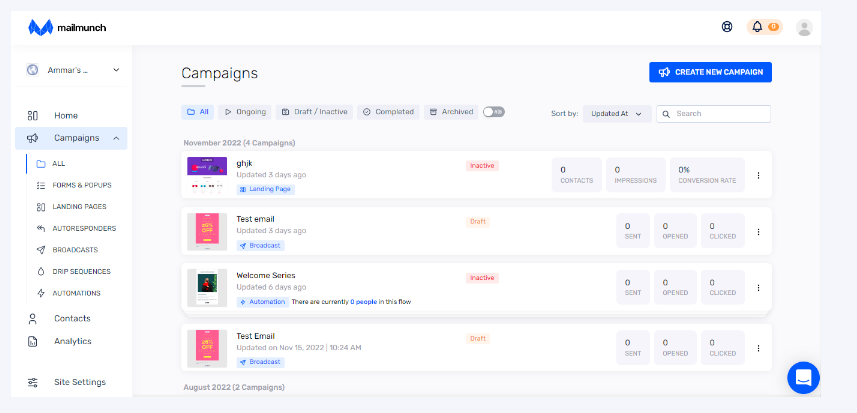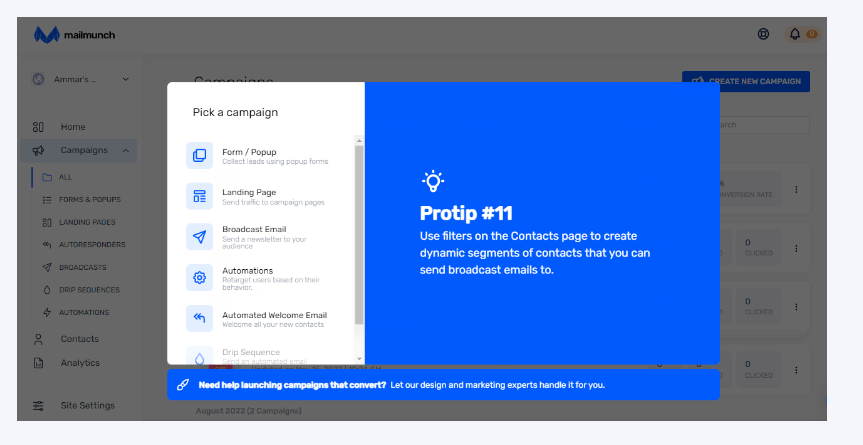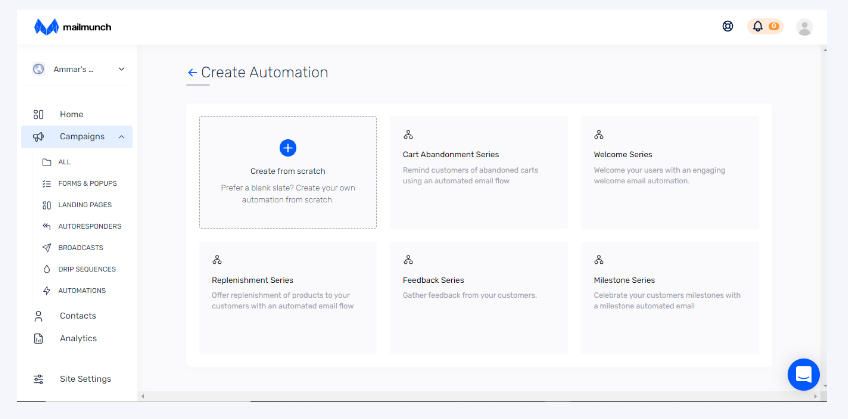.png)

Last updated on
March 11, 2024
Having an effective sales strategy is necessary for any organization's success in the competitive marketplace. A sales strategy is a thorough plan describing how a business will sell its goods or services to its target audience. A well-crafted sales strategy enables businesses to achieve revenue targets, gain a competitive advantage, and build strong customer relationships.
To assist you in developing a successful sales strategy for your company, we will delve deeper into the various elements of a sales strategy in this blog and offer advice and examples.
A sales strategy is a vital component of any business's success. It is a strategy that describes how a business will conduct its marketing and sell to its target customers. A sales strategy includes various components such as identifying the target market, understanding customer needs and buying process, creating a messaging and pricing strategy, channelizing the sales funnel, developing a sales process, and measuring performance.
In order to achieve its revenue targets, gain a competitive advantage, and create enduring bonds with its customers, a business needs a strong sales strategy. By identifying the target market and understanding customer needs, a business can tailor its messaging and pricing strategy to appeal to its customers.
Any business that wants to achieve its sales objectives and boost revenue must have a sales strategy. With the help of a sales strategy, a company can connect with its target market, turn leads into customers, and convey the benefits of its goods and services.
Having a sales strategy in place can help a business to:
.png)
Inbound and Outbound sales strategies are the two categories of sales tactics. A business model can utilize them individually or in unison to achieve its objectives. Let’s look at what they are:

An inbound sales strategy is a marketing approach that aims to seek, engage, and convert potential leads into customers by building personalized interactions with them throughout the buyer's journey.
Inbound sales focus on giving relevant and valuable data to customers. This can be done by channels such as social media, emails, etc. Using targeted content and building strong relationships with prospects, inbound sales teams can create trust and credibility, leading to higher conversion rates and customer loyalty.
Outbound sales strategies are traditional sales tactics that involve actively reaching out to potential customers and initiating a sales conversation. These sales strategies focus on actively finding and engaging potential customers, using various channels such as cold calling, mailing lists, and advertising.
Building a sales strategy involves a structured process that requires careful planning, research, and execution. Here are some steps to follow:
.png)
Study market trends and consumer wants to identify your ideal customer and create buyer personas to understand their needs, pain points, and behaviors.
The ability to generate distinctive products and services that set you apart from the competition can be gained through market research and trend analysis to assist you in spotting market gaps.
Additionally, buyer personas can provide insights into how your ideal customer prefers to be marketed to and the types of messaging that resonate with them, allowing you to create a more effective sales proposition.
Let’s take the example of HubSpot, a marketing, sales, and service software platform.
To identify their buyer personas, HubSpot conducted extensive market research and analyzed data from their existing customer base. They found that their primary buyer personas were:
The Marketing Team: These were typically small business owners, marketing managers, or marketing specialists who were focused on inbound marketing, lead generation, and content creation. They wanted to use tools to create and manage marketing campaigns, analyze data, and improve ROI.
The Sales Group: These were typically sales managers, sales reps, or business owners focused on managing and closing deals. They wanted to use tools to manage their pipeline, track leads, and automate tasks.
The Service Experts: These were typically customer service managers, support reps, or business owners focused on providing great customer service and support. They wanted to use tools to manage customer interactions, track tickets, and provide self-service options.
Based on this research, HubSpot developed targeted marketing campaigns and product features that appealed explicitly to each buyer personas.
Analyzing risks and opportunities is essential in creating a sales strategy. This involves identifying potential challenges and opportunities that may impact your ability to achieve your sales goals.
For instance, opportunities and risks that a business may encounter in eCommerce while analyzing its sales strategy include:
Marketing can support sales by generating qualified leads through targeted campaigns and providing valuable content that educates and engages prospects.
Sales can provide feedback on the quality of leads and work with marketing to refine their approach, thus encouraging mentoring relationships between sales and marketing teams. This will promote more knowledge sharing, inevitably leading to better cross-functional collaboration.
Creating a sales process is a vital way of formulating a sales strategy. It is a guide that outlines how sales are made, focusing on areas such as lead generation, marketing metrics, and closing the deal.
Developing a sales process can streamline sales efforts and improve conversion rates. By breaking down the sales process into manageable steps, you can identify areas for improvement and optimize each stage for maximum efficiency.
Let’s look at a well-known sales process called "SPIN Selling," developed by Neil Rackham. SPIN stands for Situation, Problem, Implication, and Need-payoff. The sales process is centered on the customer and includes inquiring about their needs and difficulties in identifying their pain points. The salesperson then presents solutions that target those specific needs.
Here's a brief overview of the SPIN Selling process:
Throughout the process, the salesperson uses active listening and empathy to build rapport and establish trust with the customer.
A plan of action is a document that outlines the necessary steps that a company needs to take to achieve its sales goals. Following an action plan is a crucial part of an effective sales strategy.
Investing in CRM (Customer Relationship Management) and email marketing tools is an excellent way to facilitate an effective sales strategy. These tools can help businesses increase sales productivity, improve customer relationships, and achieve their sales goals.
One example of how investing in CRM and email marketing tools can help a business achieve its sales goals is through improved lead management. By using a CRM system to track and manage leads, sales teams can more effectively prioritize their efforts and focus on the most promising leads.
Moreover, targeted and personalized messaging through email marketing tools can be utilized to foster leads, ensuring that they remain engaged and interested in the products or services offered by the company. By using these tools together, businesses can improve their overall sales productivity and increase their chances of converting leads into customers.
Additionally, by tracking customer interactions and preferences through a CRM system, businesses can improve customer relationships by delivering more personalized and relevant experiences.
Here are some best practices for creating a winning sales strategy:
Build an email automation workflow for your business and its marketing efforts. This can be done by email automation tools such as Mailmunch. You can use automation tools to create email marketing campaigns that regularly send personalized messages to your clients to inform them about your products and services.
An email automation tool like Mailmunch can help you save time and resources while still reaching many potential customers.
Here’s how you can use Mailmunch to create your first email automation campaign:
Sign in to your Mailmunch account, and you will see a dashboard displaying all your email campaigns. Locate the “Create New Campaign” button in the top right-hand corner and click on it. This will display a “Pick a Campaign” pop-up. From here, choose automation as the type of campaign.


Using Mailmunch, you can build your custom automated workflow or select a pre-built automation template that can be customized according to your requirements.

You can build emails using email templates, apply lists and tags to those emails, set the email's scheduling, and add process criteria.

Crafting a top sales pitch requires a profound understanding of your audience, their needs, and their pain points. Start by researching your target market and identifying its key challenges and priorities.
Use this information to craft a message that resonates with their needs and positions your product or service as the solution.
For example, a software company developing a new project management tool employs market research techniques to recognize small business owners who face difficulties managing multiple projects simultaneously and require an affordable and user-friendly solution.
Using this information, the company can craft a sales pitch highlighting how their project management tool can help small business owners overcome these challenges.
The software company could highlight the project management tool's capacity to simplify project management processes, boost productivity, and make it easy to use while being budget-friendly.
You can improve your chances of converting inbound leads into customers by reaching out to them within 24 hours. By reaching out to your inbound leads quickly, you can demonstrate your commitment to customer service and establish a relationship of trust and reliability. This can be done by using emails, phone calls, and social media to stay in touch with your customers and respond promptly to their queries.
Following up with your leads and customers shows that you are invested in their success and committed to building a relationship with them.
A well-crafted follow-up strategy includes regular touchpoints, personalized communication, and value-added content that reinforces your message and positions your product or service as the solution to their needs.
Asking customers for feedback is crucial in improving your sales strategy and building stronger relationships with your audience.
Regarding your sales process, customer feedback may give insightful information about what is functioning effectively and where there is space for improvement. Surveys, focus groups, social media polls, and customer reviews are a few ways you can collect feedback.
For example, Dropbox has established a routine of collecting user feedback through surveys to gather insights into their experience with the product. This allows them to identify areas for improvement and prioritize developing new features. Dropbox values customer satisfaction highly and endeavors to create custom solutions that meet the unique needs of each individual user based on their feedback.
Dropbox is dedicated to ensuring its customers' satisfaction by providing exceptional customer service and regularly gathering feedback to understand their needs and expectations.
Upselling and cross-selling with existing customers is a powerful sales strategy that can increase revenue and strengthen customer relationships.
Upselling means offering your customers an upgraded or higher quality version of the product or service they are currently using. At the same time, cross-selling involves suggesting related products or complimentary services that may enhance their experience using it.
By upselling and cross-selling to existing customers, you can take advantage of the trust and familiarity you have already established with them and offer solutions that address their evolving needs and priorities.
For example, Salesforce offers various software packages that cater to different business needs and sizes, ranging from basic to advanced features. As customers become more familiar with the software and its functions, they may need more advanced or supplementary features. Salesforce uses this opportunity to upsell its existing customers to a higher-tiered package with additional features and benefits.
In addition to upselling, Salesforce also uses cross-selling to suggest related products or complimentary services that may enhance the customer's experience using the software. For example, if a customer uses Salesforce's Sales Cloud, the company may suggest its Service Cloud product to provide a complete solution for managing customer interactions and support.
By using upselling and cross-selling, Salesforce is able to increase revenue and strengthen customer relationships. This approach leverages the confidence and trust the company has built with its clients and offers a more all-inclusive and customized solution that caters to their distinct business requirements.
Asking for referrals is a valuable sales strategy to help a business grow and expand its customer base. Referrals are an effective way to generate new leads and customers because they come from trusted sources and have high credibility and influence.
To ask for referrals, you can reach out to your most loyal and satisfied customers and ask them personally if they can refer your products and services to their contacts.
Monitoring the results of your sales strategy is crucial to understanding what is working well and where there is room for improvement.
Managers can identify areas that need improvement by tracking key metrics such as conversion rates, customer acquisition cost, and customer lifetime value.
They can also use analytics tools and CRM software to collect and analyze data to help change sales strategy based on the insights they gained.
In conclusion, a sales strategy is critical to any successful business aiming to grow and thrive in a competitive marketplace. By developing a clear and comprehensive sales strategy, companies can align their sales efforts with their overall business objectives, identify and target key customer segments, and effectively communicate the value of their products or services to potential customers.
By focusing on these key areas and developing a strategic and data-driven approach to sales, businesses can position themselves for sustainable growth and success in the long term.
A voracious reader and a music lover, Ammar has been writing engaging and informative content for over 3 years for B2B and B2C markets. With a knack for writing SEO-optimized content, Ammar ensures the results speak for themselves.
Tags:

M. Usama
April 19, 2024

M. Usama
April 19, 2024

M. Usama
April 18, 2024